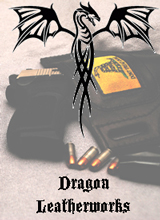The video is a bit graphic, so watch at your own discretion. Still it’s just a bit of blood, so it isn’t really gross.
Now of course the general rule is when you hear a story about a dropped gun that “Just Went Off” is to be skeptical. Almost all guns out there are drop safe, and the technology is fairly old, so dropping a gun generally won’t cause it to discharge. Of course nothing is perfect, say you have a Springfield 1911 that is a drop-safe pistol due to a light firing pin, and a heavy firing pin spring. If you drop this gun while loaded and the safety off it still may discharge due to the shock of the impact causing the trigger to recoil in it’s channel and trip the sear. Still the lighter the trigger (like the common skeletonized or cross-drilled aluminum one, or the even lighter polymer triggers) it make take quite the drop to still touch off the gun.
Still not all guns are drop-safe. Let’s look at what we know from this case. It was a .32 Revolver, and the gentleman jokes that he’s 28 years old because he is MUCH older. While there are still revolvers being made in .32 chamberings, the most common being .32 H&R Magnum and .327 Federal Magnum, I suspect this might be an older gun in the plethora of old .32 Chamberings.
If it was a double-action gun it very well might not have had the common transfer bar safety or hammer block safety like we see. It could have also been a single-action gun, which generally don’t have a drop safety of any kind, and people aware of this only load 5 rounds in a 6-shot gun, with the hammer over the empty chamber.
In either cases if the firing pin was resting on the primer, it doesn’t take much force to touch-off that round:
Also another interesting thing is the angle of the wound. Given that he was getting into a car, either his leg was at an angle, or the gun landed on the door sill or some other angled protrusion, and since it doesn’t take that much force to pop a primer, so really many angles are possible.
Last there is some talk about if he had accidentally had the revolver cocked, but as you see in the video (I also pulled out my Colt with a transfer bar, and one of my Smiths with the hammer block, and confirmed this) if you drop a drop-safe revolver with the hammer cocked the force of the impact might cause the trigger to recoil hard enough to trip the sear, but the drop safeties will engage as the trigger returns causing the hammer to impact the block or the frame before it can deliver it’s energy to the primer.
I personally have a few guns in my collection that are NOT drop safe due to them being older guns. These are NOT my carry guns, and they are not guns I teach new shooters with. Likely if you don’t have any guns older than you are, you probably don’t have any guns that aren’t drop safe, but you should be aware of how your gun works.
Also remember NEVER try to catch a falling gun, as it is a very real possibility that you may catch the trigger and all bets are off. It’s up to you, but even with my non drop-safe guns, it might even be a smarter move and take your chances with the gun falling than risk pulling the trigger. Some guns need to fall on the hammer to accidentally discharge, with a gun like the M1911 pattern that was not made with a drop-safety of some sort it needs to fall directly on the muzzle.
Be safe out there.


